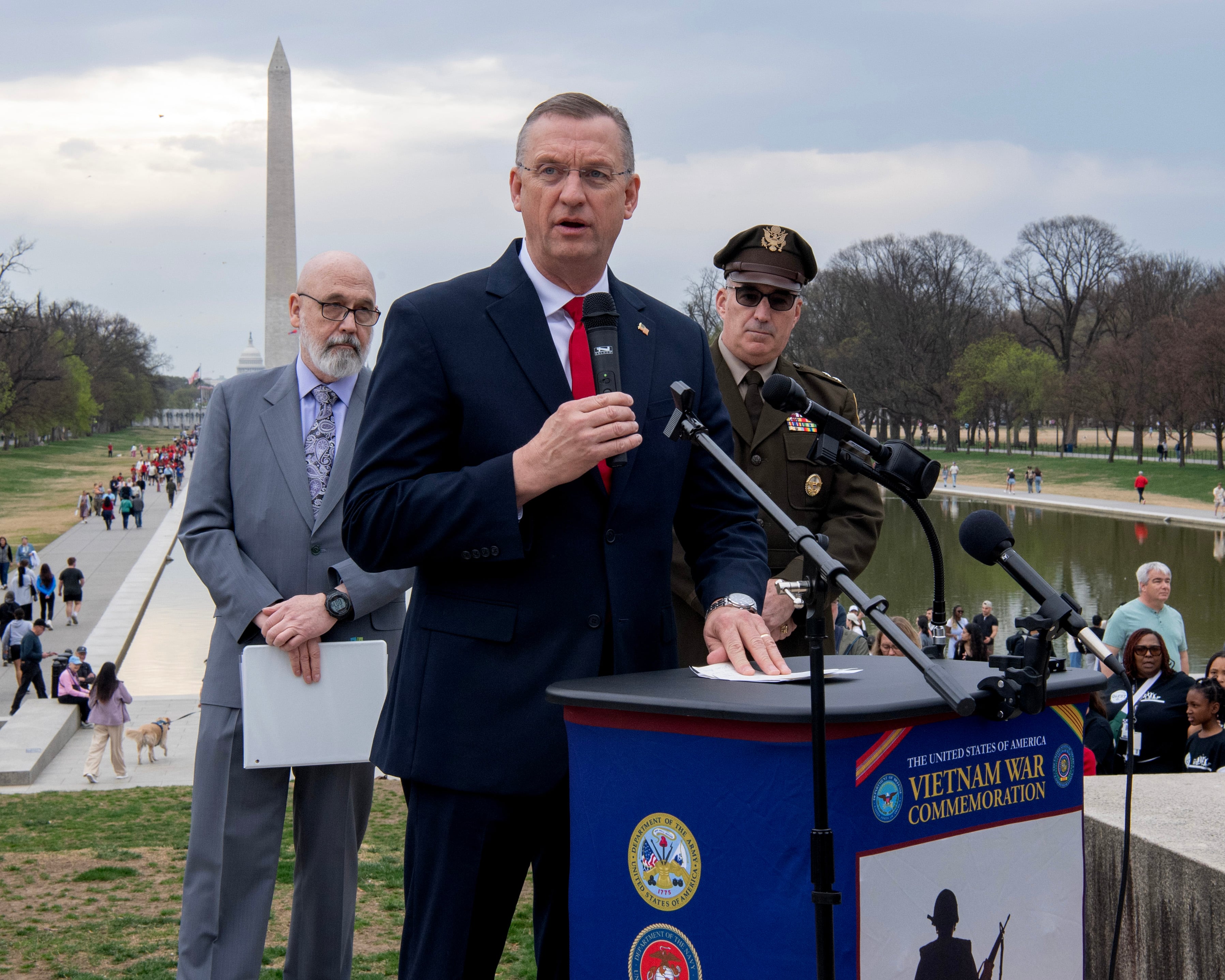WASHINGTON — After years of deliberation over whether to buy new engines for the decades-old B-52 bombers, Air Force officials say they are closer than ever to making a decision.
For the past two years, Air Force Global Strike Command has worked with engine manufacturers and financial institutions to put together a business case assessment for replacing the Boeing B-52 Stratofortress's eight Pratt & Whitney TF33 engines. That assessment shows that an initial investment in new propulsion systems can save maintenance and fuel costs in the long run, but the Air Force's acquisition wing is still working on the best way to finance the effort, said James Noetzel, deputy chief of the B-52 weapon system team.
"I think we're farther along than we've ever been in any other re-engine effort. I believe it shows a positive business case," Noetzel said in a January interview. "The devil is in the details in getting all of these tribes lined up and agreeing to do it," he added, referring to the Air Force, engine makers and financial institutions.
The time might be ripe, both politically and financially. Earlier this year, debate over whether to replace the TF33 reignited after a B-52 from Minot Air Force Base lost an engine during training. Former Air Force Secretary Deborah Lee James characterized the mishap as a "catastrophic engine failure," and although she and AFGSC commander Gen. Robin Rand maintained that it was not indicative of a systemic problem with the TF33, the incident was a source of embarrassment.
The service’s latest unfunded requirements list for fiscal year 2016 reveals the re-engining effort has become a bigger priority, with $10 million added for a B-52 risk-reduction study.
"I think this year will be the point of some decisions on how or if the program would go forward," said Scot Oathout, Boeing’s director of bomber programs. "I think it all hinges on, in these fiscally challenging times, can we afford a program like this or can you come up with different ways of financing or paying for the program? So I think those discussions are going to be coming to a head during this year."
The Air Force’s current thinking is to replace the TF33 with eight modern regional jet engines that hew closely to the size, weight and thrust of the original, thus minimizing any structural redesign to the B-52’s wings, Noetzel said. The service has issued two requests for information (RFI) to engine manufacturers, gleaning performance and technical information about potential options, which it then fed into its assessment.
"We're estimating it's roughly at least 30 percent more efficient on the fuel, which gives us huge operational benefits," he said. New engines would allow the Stratofortress to fly longer distances without needing to be refueled by a tanker, and the new propulsion systems would be more reliable, leading to more operational availability and lower maintenance costs.
Noetzel declined to quantify the cost savings expected from a re-engining, noting that the Air Force plans to initiate several third-party reviews of its business case. It’s safe to say that the savings would number in the billions over the lifetime of the engines, he said.
But despite the support of high-ranking officials such as Global Strike Command chief Rand, the service cannot afford a traditional engine procurement program, which clocks in at an estimated cost of at least $5 billion to $7 billion.
Thus, the Air Force’s acquisition organization (SAF/AQ) and its Office of Transformational Innovation have led a separate charge on alternative financing options. Leaders have floated ideas such as leasing or creating private-public partnerships, and the service in 2016 issued another RFI seeking information from financial institutions about options, Noetzel said.
"We’re not there yet. We’re still doing some exploration in that area … and we are largely leaving that component of this up to SAF/AQ and this OTI office," said James Hunsicker, Global Strike Command’s deputy chief of bomber requirements.
"We’re handling the side of it that’s more on the traditional side with the early financing and the study and the requirements generation, but we’re relying on them to break loose some of this creativity and to be able to move forward that way."
That may necessitate some legislative changes to allow the service to move outside the traditional acquisition process, he said.
B-52 manufacturer Boeing has separately conducted its own business case analysis, which — like the Air Force’s study — evaluated data from several off-the-shelf regional jet engines, said James Kroening, the company’s B-52 program manager.
Boeing believes new engines could yield 30 percent fuel savings and a cost avoidance of at least $10 billion if the B-52 continues in service beyond 2050. It also anticipates a 95 percent reduction of maintenance activity and associated costs once new propulsion systems are installed.
"There are significant operational benefits as well," Kroening said. As a result of increased fuel efficiency, a new engine could extend the unrefueled range of the aircraft by 40 percent. "That opens up a lot of different possibilities for B-52 missions on an unrefueled basis, and also reduces its dependency on tankers."
Both Boeing and the Air Force declined to disclose what specific engines it had analyzed, although officials noted that the major engine companies each had at least one potential offering.
Rolls Royce could put forward a system from its BR700 family of engines, which power the Gulfstream 550, Gulfstream 650 and Boeing 717. Pratt & Whitney have promoted a modernization of the TF-33 engines, but could offer the PW 800 or PW1000G.
But General Electric’s TF34 could come out ahead of other options because of its history of military use on the A-10 and other aircraft, said Richard Aboulafia, an analyst with the Teal Group.
Valerie Insinna is Defense News' air warfare reporter. She previously worked the Navy/congressional beats for Defense Daily, which followed almost three years as a staff writer for National Defense Magazine. Prior to that, she worked as an editorial assistant for the Tokyo Shimbun’s Washington bureau.




